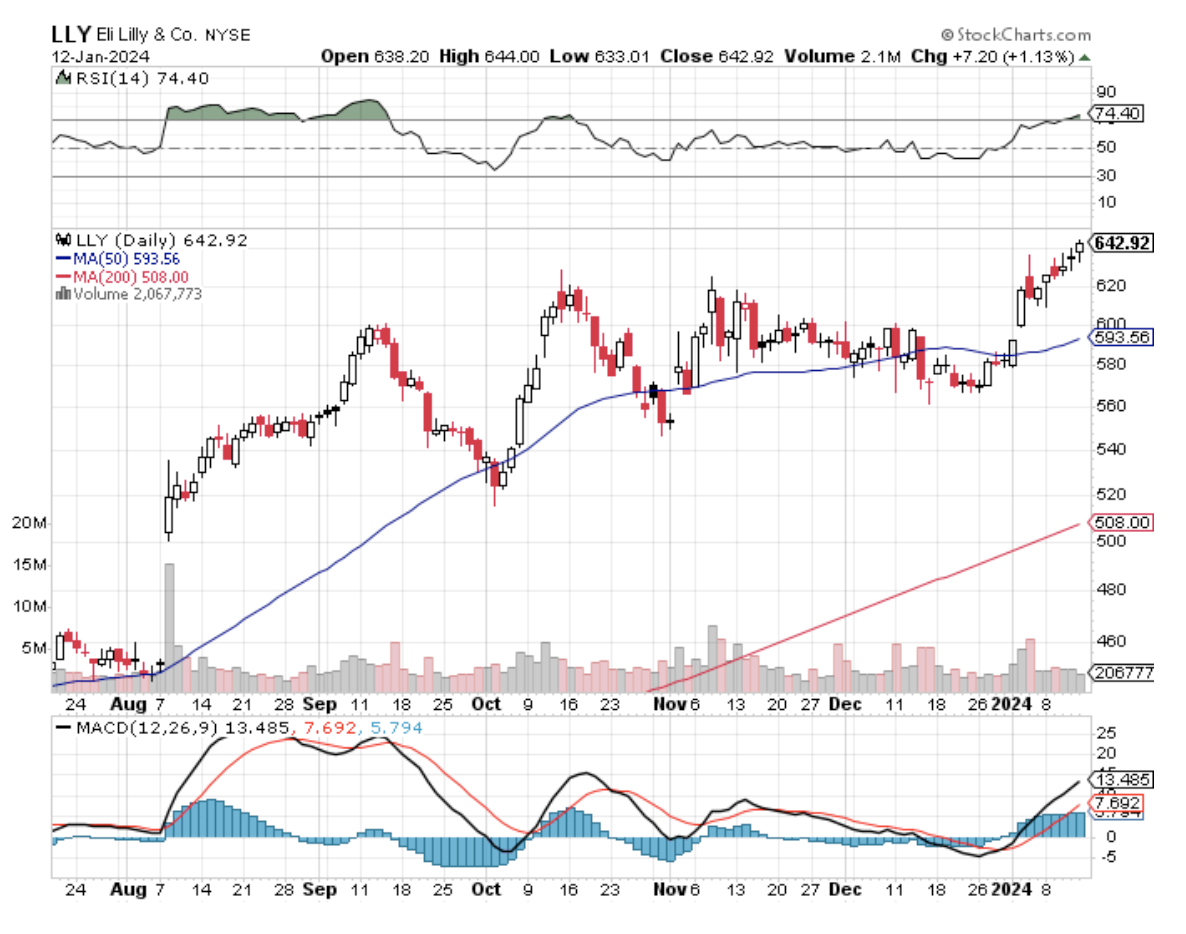Today, let's talk about something that's stirring up quite the buzz in the investment community, something that's not just about numbers and charts, but about potentially changing lives.
Now, I'm sure you've heard of Apple (AAPL), Amazon (AMZN), Alphabet (GOOGL), Microsoft (MSFT), Meta Platforms (META), and Nvidia (NVDA). These tech titans aren't just playing around with gadgets and gizmos; they're digging deep into the world of knowledge to uncover stuff we didn't even know was missing. And let's be clear, this isn't just some fancy artificial intelligence show-off; it's bigger, much bigger.
But, recently, other industries aren’t letting tech have all the fun.
The pharma industry, led by stars like Moderna (MRNA), Eli Lilly (LLY), and Novo Nordisk (NVO), is on the brink of what I'd call medical miracles.
We're looking at treatments that might kick some serious diseases to the curb – illnesses that we thought were just part of the unlucky draw in the genetic lottery.
Admittedly, figuring out the real worth of these innovations is a bit like trying to nail jelly to the wall – traditional financial analysis scratches its head at this sort of thing.
But for those of you who don't mind a bit of a rollercoaster ride, investing in these themes could be as rewarding as finding a forgotten winning lottery ticket in your old jeans.
Let's chew on obesity for a second. It's a big deal, literally and figuratively. It's the root of all sorts of nasty stuff like heart disease and diabetes.
Here's where Lilly and Novo Nordisk come in, swinging like heroes with their weight-loss drugs. These aren't just your average diet pills; we're talking about drugs that could turn the tables on major illnesses and even some curveballs like Alzheimer’s and sleep apnea.
Lilly's stock has been on a joyride, up 77% in the past year. Sure, by the bookworms' metrics, it's overvalued, but if you ask me, those numbers are playing catch-up to what these drugs could really do.
For context, imagine if you had bought Amazon or Apple back when they were just a bookstore and a computer company. Looking at their history and trajectory, Lilly and Novo Nordisk could be cooking up something similar.
And with over 20 studies lined up in the next five years, Lilly's stock, hanging around $625, could jump to a cool $840 by 2028 if things go well.
Keep in mind that the obesity treatment market is huge, and I mean, really huge. We're talking over 100 million potential customers in the U.S. alone.
And get this: insurance companies, those penny pinchers, are likely to cover these drugs because they're cheaper than surgeries.
Getting down to the specifics with Lilly, they've been making waves in the weight loss market with Mounjaro, raking in a sweet $2.9 billion in just nine months. And with Zepbound, it's like they've hit the jackpot twice.
Still, it's not a solo race; Novo Nordisk is right there with Wegovy and Ozempic. The demand is so hot that there were shortages last year. Talk about being in high demand!
But here's where Lilly might just have the upper hand. Their molecule, tirzepatide, is like the Usain Bolt of weight loss drugs – up to three times more effective than Novo Nordisk’s semaglutide.
And with the market expected to balloon to $100 billion by 2030, we're just seeing the opening act of what could be a blockbuster show.
With all this obesity talk, it’s important to understand that Lilly is no one-trick pony. They've got a whole stable of drugs treating everything from lymphoma to ulcerative colitis. And with over 20 programs in phase 3 studies, they're not running out of steam anytime soon.
Plus, here's the cherry on top: Lilly isn't just about making money; they're sharing the love with a 15% hike in their dividend.
That means if you jump on the Lilly train by Feb. 15, you're in for a treat in early March.
So, is Lilly a solid bet for the long haul? It sure looks like it. The excitement around their weight loss treatments is just one piece of the puzzle.
With a variety of drugs in their arsenal and an impressive pipeline, Lilly isn't just a flash in the pan. Sure, there are the usual hiccups like patent expiries and pipeline flops, but with their portfolio, they look set to weather any storms and keep the growth party going. I suggest you buy the dip.


